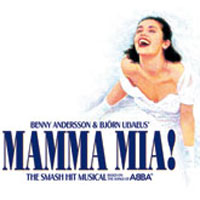
 Three different choreographers bring new life and energy to Tchaikovsky’s tea dance from the Nutcracker Suite. Yin Yue, Edwaard Liaang, and Peter Chu have created three distinct dances that are eclectic and modern in keeping with the artists’ personal inspiration, East-Asian ethnic background, dance training, and lived experience. Their works of art break the mold of using customary Western ballet movements and hackneyed Chinese stereotypes to fit the traditional music. The series called “Unboxed [Tea]” or a “Final Bow to Yellowface” was born when each of these artists was asked to create a one-minute dance over the course of three days to be performed by the Hubbard Street Dance Company and subsequently shown in three weekly installments online via Vimeo.
Three different choreographers bring new life and energy to Tchaikovsky’s tea dance from the Nutcracker Suite. Yin Yue, Edwaard Liaang, and Peter Chu have created three distinct dances that are eclectic and modern in keeping with the artists’ personal inspiration, East-Asian ethnic background, dance training, and lived experience. Their works of art break the mold of using customary Western ballet movements and hackneyed Chinese stereotypes to fit the traditional music. The series called “Unboxed [Tea]” or a “Final Bow to Yellowface” was born when each of these artists was asked to create a one-minute dance over the course of three days to be performed by the Hubbard Street Dance Company and subsequently shown in three weekly installments online via Vimeo.
For the purpose of this article, I got to sample the first of the three dances in the series. This one was created by Yin Yue and merges classical Chinese ballet, traditional classical Chinese folkdance, and Western contemporary dance with the purpose of depicting contemporary life as compared to something we might think up from our history books on China. Yue’s version is not only contemporary but modern casual and greatly differs from the more traditional interpretation, such as that of Mariinsky and the Russian State Ballet, with its timeworn choreography and more highly mechanized rhythmic pulsing and aerobatics. Yue infuses the dance with a series of flowing movements representing a deeper knowledge of Chinese culture as compared to more stereotypical notions of the “Oriental” and the exotic as seen through Western eyes. The performance is thus the polar opposite of the rigidly stylized Western concept of the pre-Revolution Chinese—down to the clothing, such that today’s dancers wear sweatpants, t-shirts, and face coverings.
The three dancers who performed to Yue’s choreography used the same movements and, despite the physicality, seemed very relaxed. The feeling I got was that of dancers in a rehearsal room rather than on stage because of some lack of precision in the final product. This may have had more to do with how quickly the dance was put together. According to Yue, developing this very short piece was a challenge, considering that it took place within the context of a three-day workshop. That said, the reimagining of the choreography was very well done, and I enjoyed watching the performance very much. I particularly liked the frames when Yue was practicing her own dance moves in order to work out any potential difficulties.
The camera work and editing are excellent, both in the interview of Yue and when we get to watch the various dance clips. I especially loved seeing the long dissolves (i.e., fade-ins and fade-outs) when video director and tech crew used the switcher to rotate from one camera to another during the one-minute fait accompli. This video effect adds to the flow of the whole piece and its ambiance.
The use of the word “Unboxed” means breaking through the pigeonholing of one’s identity as defined by others. Now it is the members of the ethnic community itself who get to proclaim their own innovation and unique self-expression. However, Yue’s montage of forms and combinations doesn’t just broadcast one ethnicity but many. It demonstrates how one culture can borrow from another and blend diverse elements together in a copesetic result. With no need to be confined to how things have been done in the past, each artist now has the opportunity to make the dance their own.
If there is one piece of advice I would offer, it is that all the three dances and the interviews of the various artists should have been compiled sequentially and presented as one large show. The segment featuring each one could have still been only five or ten minutes long, for a total runtime of about thirty to forty minutes, assuming that there is some type of introduction to the entire montage and credits at the end. As things currently stand, we have to wait an entire week to see the next artist’s conception of the tea dance. Putting all the segments together would have provided a great opportunity to compare and contrast the artists’ lives and their work. It would have been much better to watch the same show on three separate nights rather than three different shows each separated by a week.
“Unboxed” features new talent who take a new look at classic dance performances. Online videos can be found on the Hubbard Street Dance Chicago website https://www.hubbardstreetdance.com/. Their home page features “Unbox [the Tea]”, the current series of three dances which combine the yin and the yang with the old and the new, and the Western and the Eastern.
These three virtual shows are free to all and take place online on May 10, 17, and 24, 2021.
For more performances in the “Unboxed” series and to learn more about the Hubbard Street Dance Chicago and future shows, go to https://www.hubbardstreetdance.com/.






More Stories
“Mamma Mia!” Reviewed by Paul Lisnek
“The Simon & Garfunkel Story”
“Women Beware Women”